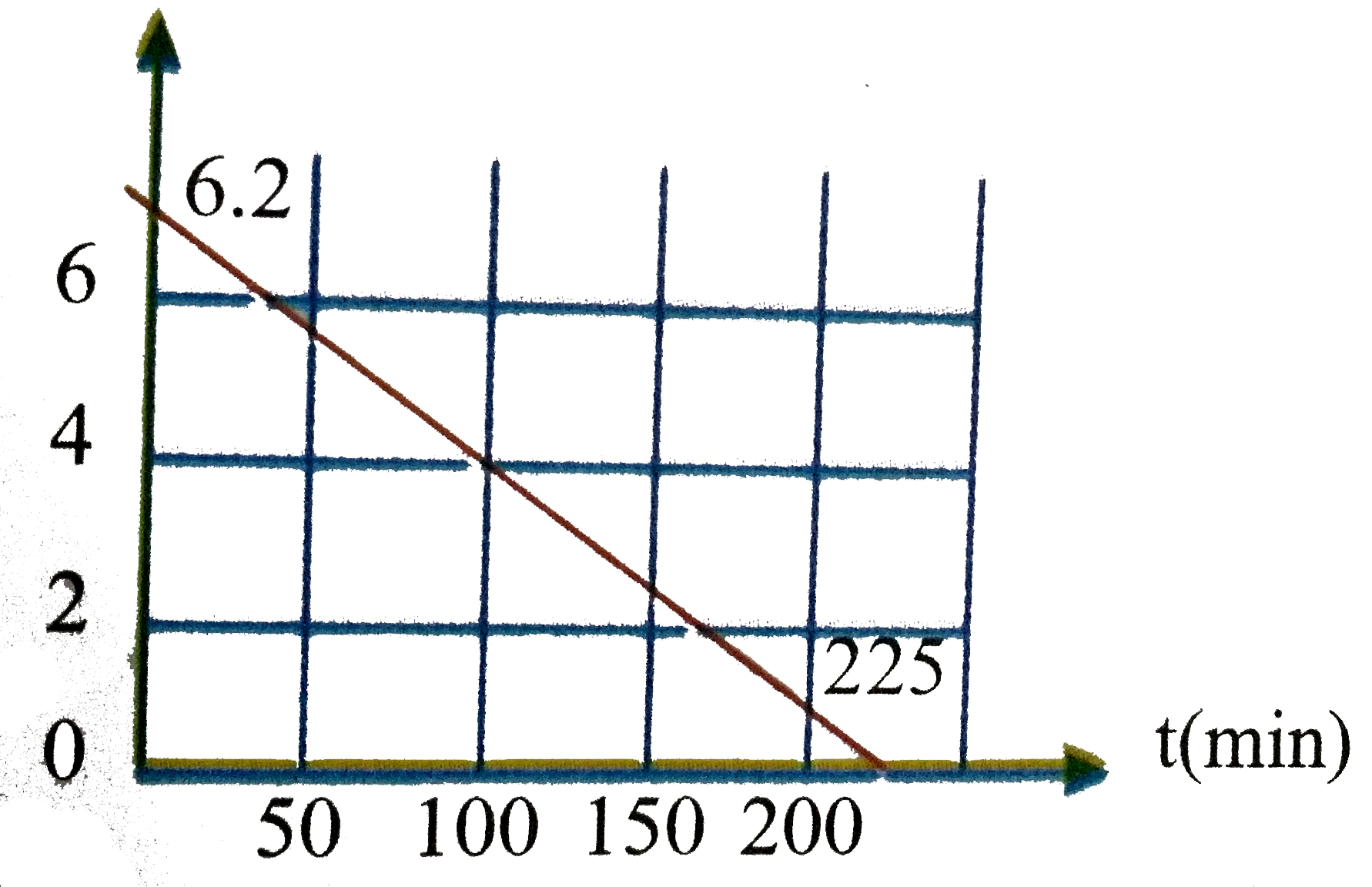The table that follows shows some measurements of the decay rate of a sample of .128I, a radio nuclide often used medically as a tracer to measure the rate at which iodine is absorbed by the thyroid gland.
∣∣
∣
∣
∣
∣
∣∣Time(min)A(counts/s)Time(min)A(counts)/s4392.213210.936161.41644.566865.51961.861026.82181.00∣∣
∣
∣
∣
∣
∣∣

The half life t1/2 for this radio nuclide.
25 min
50 min
2.5 min
5 min
The correct Answer is:A
A=A0e−λt⇒lnA=lnA0−λt
∴λ=lnA0−lnAt=6.2−0225=0.0275−1min
∴T1/2=0.693λ=25 min
Topper's Solved these Questions
- BOOK - NARAYNACHAPTER - NUCLEI EXERCISE - ASSERTION & REASON5videos
NUCLEI
- BOOK - NARAYNACHAPTER - NUCLEI EXERCISE - EXERCISE-330videos
NUCLEI
- BOOK - NARAYNACHAPTER - NUCLEAR PHYSICSEXERCISE - LEVEL-II-(H.W)9videos
NUCLEAR PHYSICS
- BOOK - NARAYNACHAPTER - RAY OPTICS AND OPTICAL INSTRAUMENTS EXERCISE - EXERCISE- 4 One or more than one correct answer type13videos
RAY OPTICS AND OPTICAL INSTRAUMENTS
Similar Questions
For an elementary, 2A+B→3C, the rate of appearance of C at time 't' is 1⋅3×10−4mol L−1s−1. Calculate at this time (i) rate of the reaction (ii) rate of disappearance of A.
View SolutionFor an elementary reaction
2A+B→3C
the rate of disappearance of C at time t is 1.3×10−4mol L−1s−1. Calculate at this time
(i) rate of the reaction.
(ii) rate of disappearance of A.View Solution
Knowledge Check
- Question 1 - Select One
The half-life of a sample of a radioactive substance is 1 hour. If 8×1010 atoms are present at t=0, then the number of atoms decayed in the duration t=2 hour to t=4 hour will be
A2×1010B1.5×1010CZeroDInfinity - Question 2 - Select One
The half-life of a sample of a radioactive substance is 1 hour. If 8×1010 atoms are present at t=0, then the number of atoms decayed in the duration t=2 hour to t=4 hour will be
A2×1010B1.5×1010CzeroDinfinity - Question 3 - Select One
A first order reaction is found to have a rate constant, k=4.2×10−12s−1. Find the half-life of the reaction.
A1.26×1013sB1.65×1011sC1.65×10−11sD1.26×10−13s
For an elementary reaction
2A+B→3C
the rate of appearance of C at time 't' is 1.3×10−4mol L−1s−1.
Calculate at this time
(i) rate of the reaction.
(ii) rate of disappearance of A.View SolutionCane sugar is gradualaly converted into dextrose and laevuloe by dilute acid. The rate of inversion is observed by measuring the polarisation angle, at various times, when the following results are obtained:
Time (min)010203040100∞Angle32.428.825.522.419.6−6.1−14.1
Show that the reaction is of first order. Calculate the value of t, when the solution is optically inactive.View SolutionFor the elementary reaction 2A+B→3C, if the rate of appearance of C at time 't' is 1.3×10−4molL−1s−1, calculate at this time (i) rate of the reaction (ii) rate of disappearance of A.
View SolutionThe half-life of a radioactive substance against α−decay is 1.2×107s. What is the decay rate for 4×1015 atoms of the substance ?
View SolutionFor a first order reactin, rate constant is given is logk=14−1.2×104T, then what will be value of temperature if its half life period is 6.93×10−3min ?
View Solution

